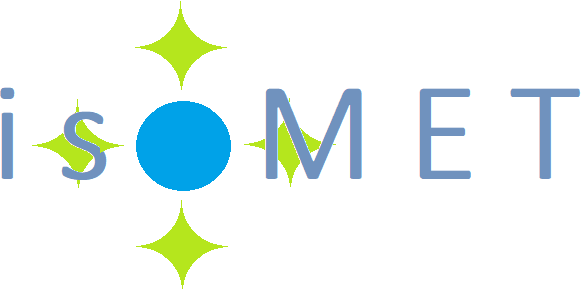.bmp?lang=en-GB)
Atmospheric observations provide a reality check on the true efficacy of climate change mitigation policy. Methane is a potent greenhouse gas (GHG) with multiple complex sources and stable isotope ratios provide a fingerprint needed to verify emissions by source type. This project seeks to improve -
The Paris Agreement of November 2016 requires governments to pursue efforts to limit the global temperature increase to 1.5 °C. This climate agreement includes an Enhanced Transparency Framework, to track countries’ progress towards achieving their individual targets (i.e., the Nationally Determined Contributions, NDCs), along with a 5-yearly “Global Stocktake”. Progress will ultimately be measured by comparing national reporting of GHG fluxes against independent scientific estimates. This project develops new measurement science that will promote countries’ ability to carry out this evaluation. The WMO’s Global Annual to Decadal Climate Update explains how close the Earth already is to reaching the 1.5 °C increase.
According to this report five of the global average temperature datasets placed 2020 as one of the three warmest years on record with the global average temperature of 1.2 °C above preindustrial temperatures (World Meteorological Organization, 2021). The ultimate temperature rise that the Earth will witness over the 21st century is strongly related to cumulative GHG emissions (Allen et al., 2009; Millar et al., 2017). The challenge is therefore significant – net emissions of GHGs must reach zero as quickly as possible if temperatures are to stay below the 1.5 °C increase this century. Governments have declared a state of emergency. On a European level, goals for emission reduction have been set for the years 2020, 2030, and 2040, with a reduction of 40 % for the year 2030. In 2050, the EU wants to be “climate neutral”. Even if the global net CO2 emission reduction targets were to be met, however, the rising radiative forcing due to the positive trend in atmospheric CH4 could derail climate policy ambitions (Nisbet et al., 2019).
Catch up on the latest project updates and insights in our news section.

The aim of this work package is to develop a harmonised in situ CH4 isotope dataset of ambient air in Europe to resolve compatibility issues of measurements of δ13C or δ2H in CH4 across multiple laboratories. This harmonisation will include a) improved methodologies and procedures to improve the comparability between independent OIRS based in situ analyses of ambient air CH4 for δ13C and δ2H and the traceability to the VPDB and VSMOW scales and b) improved validation of IRMS and OIRS methodologies across Europe through interlaboratory comparisons.
WP2: A sustainable metrological infrastructure for a dataset for CH4 isotope source signature measurements in Europe
The aim of this work package is first to develop a sustainable metrological infrastructure for a dataset for δ13C(CH4) and δ2H(CH4)-source measurements in Europe, and second, to evaluate the potential for source apportionment of rare doubly-substituted 13CH3D and 12CH2D2 isotopologues analysis in selected campaigns.
WP3: Atmospheric transport modelling to direct the measurement strategy for optimal emissions estimation and demonstration of emissions estimates from new datasets
This work package aims to use atmospheric chemistry transport modelling to inform WP1 and WP2, creating estimates of the minimum measurement requirements for deployed instruments. The full dataset of measurements across Europe from WP1 and WP2 will be used in atmospheric transport models and inverse statistical methods, to enable a first demonstration of estimates of emissions from the new datasets.
WP4: Creating impact
The aim of this work package is to ensure that the research outputs are communicated to the end-users and stakeholders, maximising the impact and uptake. Activities in this work package will also engage with stakeholders to ensure that the direction of this project will meet their needs.
WP5: Management and coordination
The project will be managed by the coordinator from PTB, who will be supported by the project management board (PMB) consisting of the coordinator and the work package leaders.
The members of the PMB will guide the project, attend the project meetings, organise the progress meetings and call additional meetings if needed to ensure the overall project’s success.
Coming soon!
Contact the project coordinator, Volker Ebert , PTB – volker (dot) ebert (at) ptb (dot) de
Funded by the European Union. Views and opinions expressed are however those of the author(s) only and do not necessarily reflect those of the European Union or EURAMET. Neither the European Union nor the granting authority can be held responsible for them. The project has received funding from the European Partnership on Metrology, co-financed from the European Union’s Horizon Europe Research and Innovation Programme and by the Participating States.

Our research and measurement solutions support innovation and product development. We work with companies to deliver business advantage and commercial success.
Contact our Customer Services team on +44 20 8943 7070